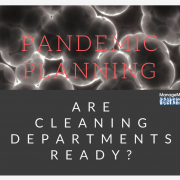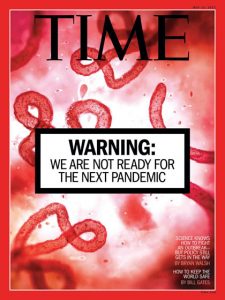You Should Start Preparing for the Next Pandemic Now
Throughout the pandemic, our news feeds were inundated with headlines and articles telling tales of cleaning workers were on the frontlines of the COVID-19 pandemic, many of whom were ill-equipped for the task.
Custodians were “nervous as hell,” said one headline.
“No Bleach, Dirty Rags: How Some Janitors Are Asked to Keep You Virus-Free” told the story of cleaners who were required to provide their own personal protective equipment (PPE) and products.
In “What About the Workers Cleaning Up Coronavirus?” a reporter wrote, “…some [cleaners] say they aren’t being provided with adequate training or personal protective equipment.”

The pandemic exposed what many of us in the cleaning industry already knew: That way too many people (and frankly, often first generation immigrants) are tasked with the job of cleaning and given little to no training to perform the job.
We give many of these workers keys to our workplaces. Why can’t we give them keys to protecting both their own health and safety — and ours?
Little Training Can Lead to Big Problems
What we know: Fomites are not the primary source of transmission for SARS-COv-2, the virus that causes COVID-19. Rather, according to the CDC, the virus primarily spreads through respiratory droplets and by airborne transmission.
But we didn’t know this at the beginning of the pandemic, and that new knowledge doesn’t change the fact that many custodial operations were caught off guard. From cleaning product and PPE shortages to a fundamental lack of understanding around the differences between cleaning and disinfection, custodial teams weren’t prepared.
But unfortunately, this pandemic won’t be the last. As a recent article in National Geographic starkly reported, “Scientists say it’s only a matter of time before another deadly virus jumps from animal to human and goes viral.”
We never like to say, “We told you so,” but…
Pandemic planning has been a core focus for (OS1) teams for several years. Rather than reacting to a pandemic, our founder, John Walker, believed that all cleaning operations should be prepared to follow a series of steps should a pandemic outbreak occur.
This plan was tested with the recent pandemic, and if you listened to any of the Cleaning Conversations episodes, you heard from many (OS1) teams who 1) Were prepared to keep indoor environments clean during the coronavirus pandemic and 2) Felt equipped to communicate and educate stakeholders on the actions they were taking to keep building occupants safe.
So, what should your plan include?*
In preparing for another pandemic event, what are some of the core things a custodial professional should consider?
- A list of surfaces throughout your building
- A list of products/quantities you should add to your inventory, including chemicals and PPE
- Specialized worker training on use of chemicals and personal protection
- Charts and training resources for new cleaning workers
- Websites for federal and local health agencies to stay updated on the latest guidance and information related to the pandemic
- Ongoing training logs to ensure workers understand the plan and are ready to enact it in the event of a pandemic.
If you want to make sure your custodial team is prepared for the next pandemic, you need to start planning now. If they are willing to step up and protect our buildings, we owe it to them to make sure they are equipped with the right PPE and training to do so.
* This list is intended to provide your organization with a starting point for your planning.




